Back to Work Page
Very
few Canadians today rely on wood to heat their homes. Most use gas
or electric heat. Before these were common options wood was used
across the country. The old joke was that wood heated you twice:
once when you cut it and once when you burned it.
Conscientious
objectors chopped a lot of wood during the Second World War, more
than eighteen thousand cords, in fact. Wood is useful for many things,
but first we need to know what a cord is.
A
cord of wood is a pile of cut wood 4 feet high, 4 feet wide, and
8 feet long [1.2 m high, 1.2 m wide, and 2.4 m long]. This may not
mean a lot, but consider that each cord of wood is the equivalent
of 1,200 magazines, 89,870 sheets of paper, or 7,500,000 toothpicks.
Does that help you understand how much a cord is worth? Multiply
each those numbers by 18,300 to see what the COs accomplished.
Of
course, during the war, Canada needed the wood for more important
things than magazines and toothpicks. Canada needed the wood for
heat. Wood contains energy that can be released by burning. This
is the why fire is hot. A common unit of energy is the BTU (British
Thermal Unit). To visualize this, think of a matchstick. One lit
matchstick is equal to one BTU of energy.
One
cord of wood contains between 20 million and 25 million BTU. Probably
the most practical way to measure a cord of wood is by relating
it to heating a house. To heat an average-sized house for one winter
takes about 5 cords of wood.
When Vancouver suffered a fuel shortage during the war because of
an unusually cold winter, COs were standing by to chop and deliver
fire wood to citizens. That winter, the fire wood the COs produced
would have heated 3600 homes. Andrew
Steckly filmed some of his CO experiences, including chopping
fire wood for Vancouver .
 David Jantzi tells how
the COs cut down trees for fuel to be used in Vancouver homes.
David Jantzi tells how
the COs cut down trees for fuel to be used in Vancouver homes.

“Since
our camp was close to Vancouver we were called upon to help alleviate
a desperate fuel shortage one winter when it was unusually cold.
We cut wood in a strand of trees within city limits for the people
to use.” [ASP, 187]
COs
served in the logging industry all across Canada. During the cold
winter, every part of the country needed heat. George Kroeker had
served in Riding Mountain National Park when he was called to cut
wood.
“January
1943, late in the evening, students and other volunteers were
ordered by the selective services to board the train destined
to the pulp industries at Armstrong and Kapuskasing, Ontario.
We were all hired as woodcutters. There were 175 of our Mennonites,
students, farm help, and others on this train. Half of us were
to be stationed at Armstrong and the rest farther east to Kapuskasing.
I was one who stayed with the latter group.” [ASM, 18-21]
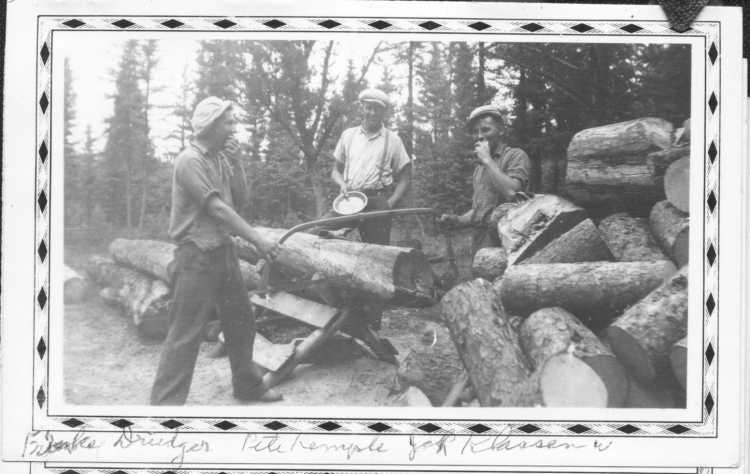 |
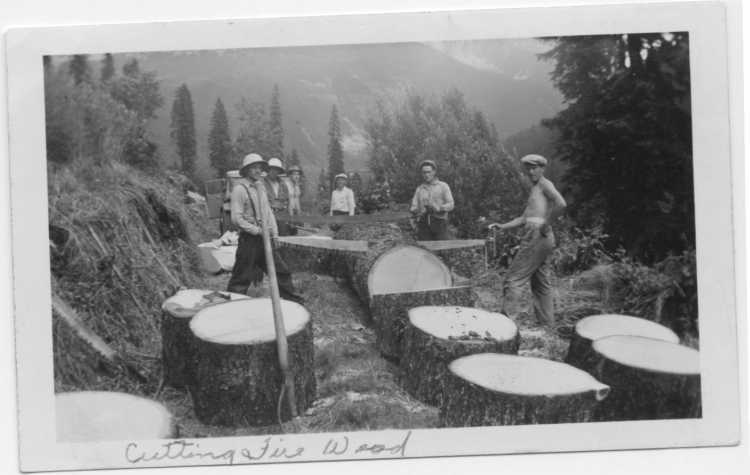 |
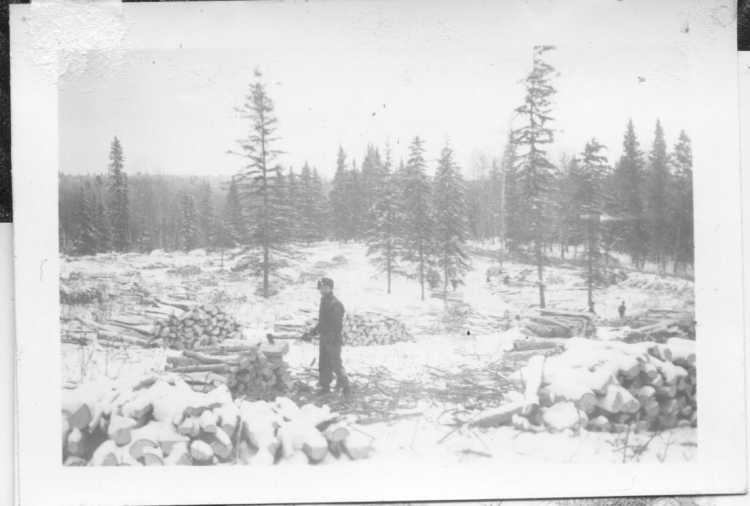 |
| Frank Driedger, Peter Rempel, and Jack Klassen cutting
wood. |
Cutting cedar for firewood. |
Clearing out an area of trees at Clear Lake. |
 |
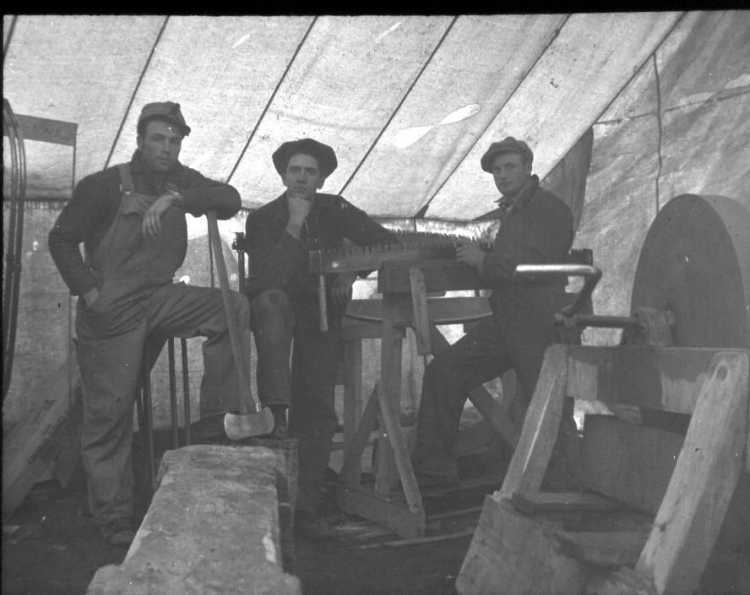 |
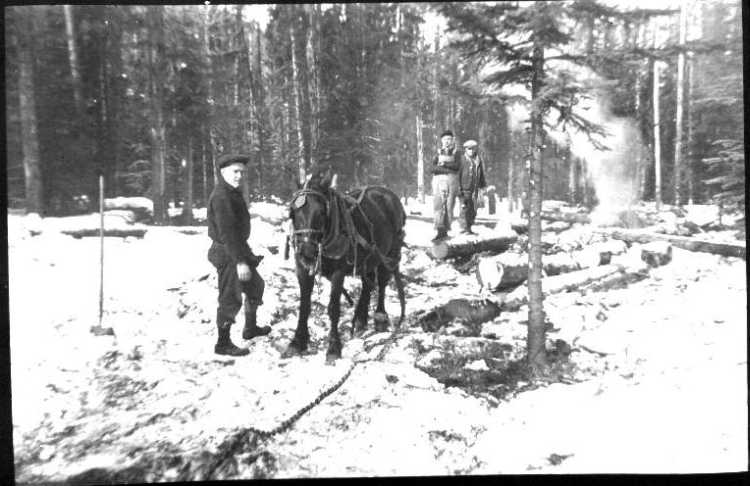 |
| Loading logs onto a truck at Clear Lake. |
Three young COs posing with tools next to the grind stones.
|
COs dragging logs out of the bush by horse. |
Victor
Goossen worked in Banff National Park.
“This
camp housed approximately 40 COs whose work consisted of cutting
down dry trees that had died in an earlier forest fire. These
trees were cut into different lengths, depending on the thickness
of the tree. Trees over 10 or 12 [inches in diameter, or 25 –
30 cm] were cut into firewood and hauled away to be sold. Smaller
diameter trees were cut into 8 -16 foot [2.4 – 4.8 m] lengths,
to be used as mine props in underground coal tunnels to keep the
ceiling from falling in. These were hauled to Drumheller, Alta.”
[ASP, 93]

Goossen's
camp, and others, produced enough mine props to stretch 246 km.
Other COs doing logging work produced enough saw timber to measure
849 km end to end. This wood was used in construction projects across
Canada. In addition, the cordwood produced heated thousands of homes.
This is all the more remarkable when you consider that COs working
in the BC Forestry Service had many other assignments. In fact,
only 7% of the men's work was devoted to producing cordwood.
|


